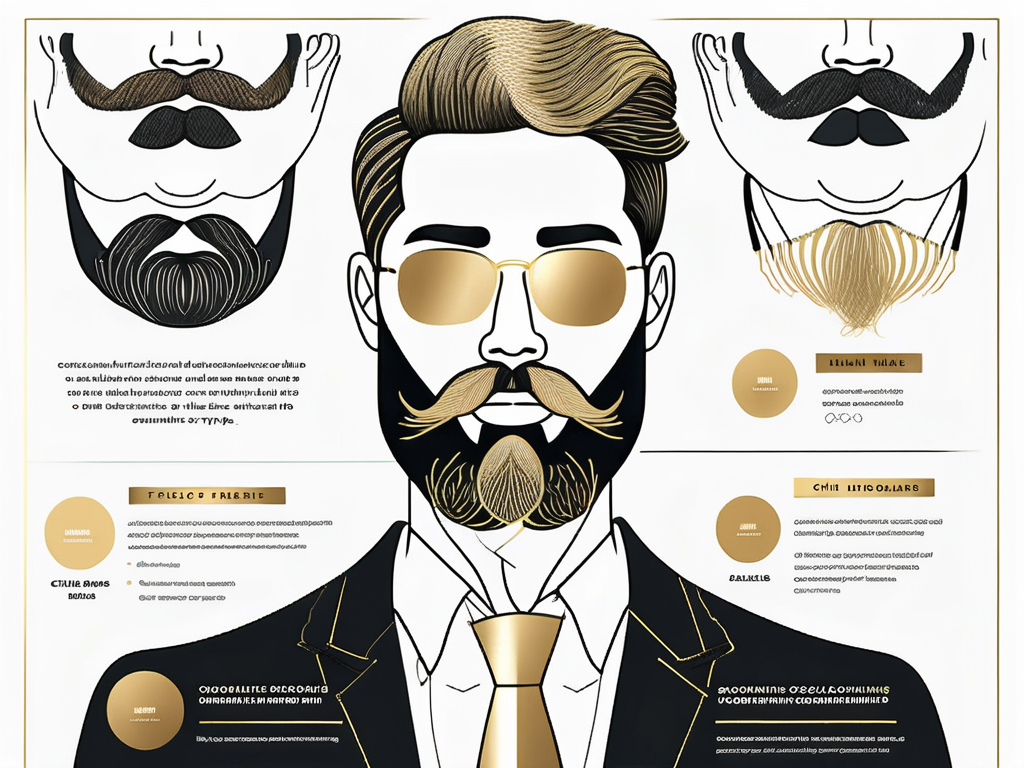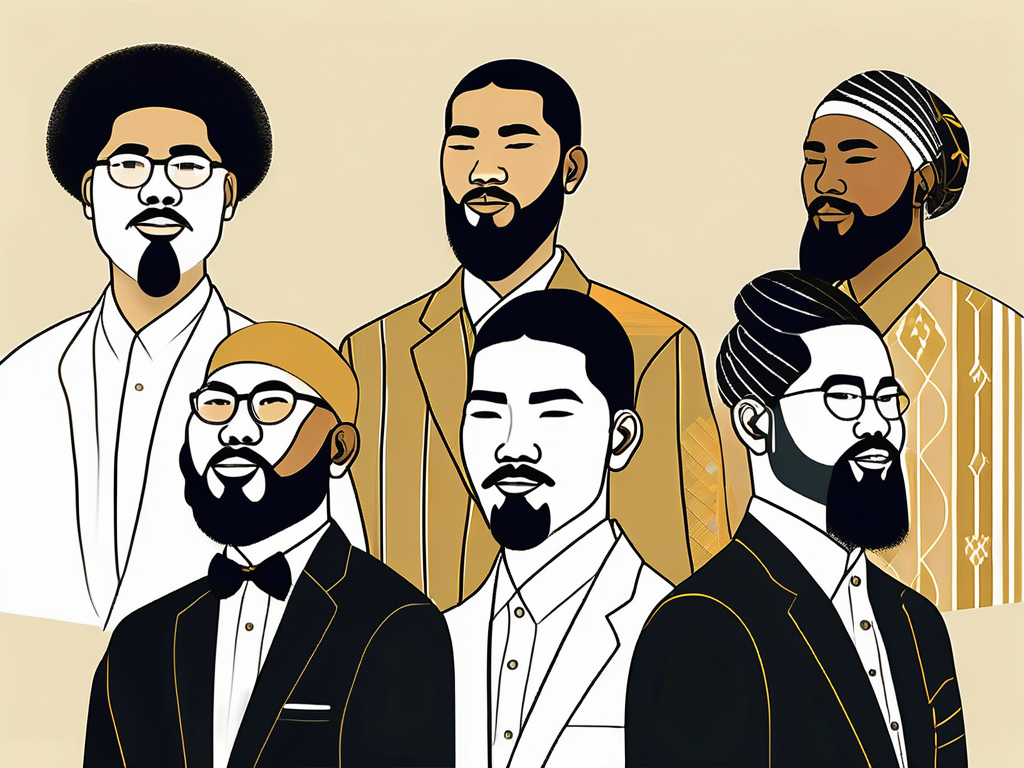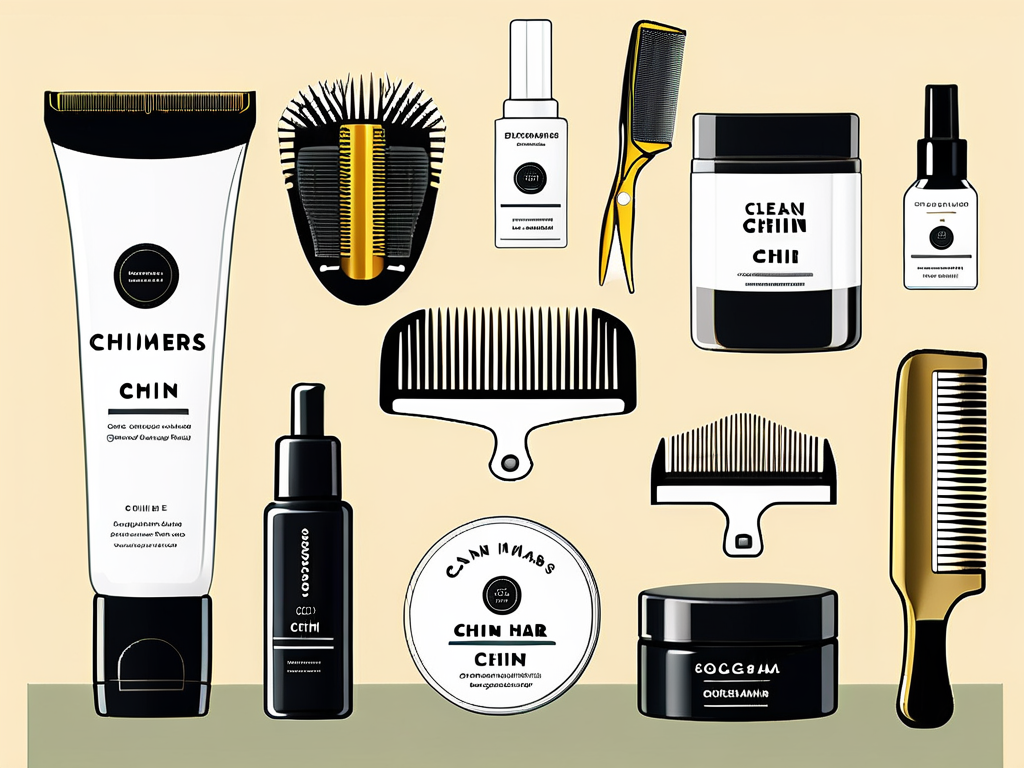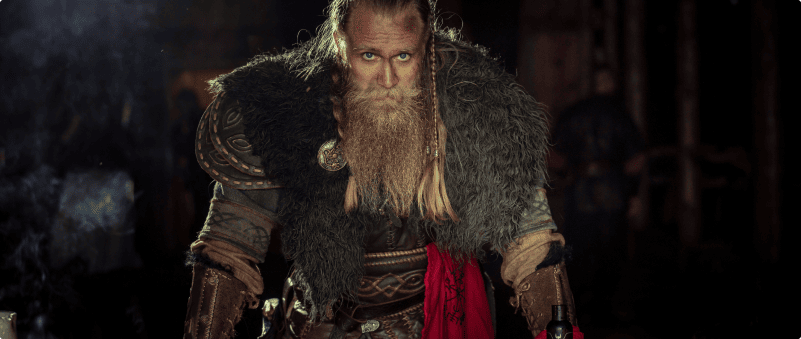Author: The Beard Struggle
Published at: Oct 11, 2024
Did you know that the average male face has approximately 30,000 to 40,000 hair follicles? Among these, the hair found on the chin area is often referred to as various terms, each with its unique flair.
Chin hair, a key feature in many facial hairstyles, often sparks curiosity about its specific name and role in grooming. Whether you're sporting a well-groomed goatee, a classic beard, or just curious about facial hair terminology, understanding the different types of facial hair can help elevate your grooming game.
In this article, we’ll explore what chin hair is called, how it fits into various styles, and why it plays an important role in shaping your overall look.
Chin hair is commonly referred to as a beard or goatee, depending on its style and thickness. Some people can also define chin hair as:
Understanding these definitions will help you navigate discussions ranging from barber consultations to conversations with friends about your latest facial hair trends.
Each style carries its own cultural significance and history, often reflecting personal identity or fashion statements. For instance, the goatee has been a symbol of rebellion and individuality since the 1960s, while the soul patch has roots in jazz culture, often associated with musicians who embraced a laid-back yet stylish persona.
When delving deeper, you’ll discover a plethora of terms that categorize facial hair. Some of the common categories include:
Familiarity with these definitions not only enriches your vocabulary but also acts as a critical tool in expressing styles one may wish to sport.
Each type of facial hair can be styled in numerous ways, from the classic handlebar moustache to the modern full beard. Moreover, trends in facial hair often reflect broader societal changes; for example, the resurgence of the full beard in recent years has been linked to a growing appreciation for masculinity and natural grooming.
This evolution in styles can lead to exciting discussions about personal grooming philosophies and the impact of celebrity influences on everyday choices.
Diving deeper, let’s examine the anatomy of facial hair. Every hair follicle tells a story of growth influenced by various biological factors. Understanding this can also clarify why some people have bushy beards while others are stuck with sparse chin hair.

Hair growth on the face, including chin hair, follows a cyclical pattern. Each hair goes through three phases:
Understanding these phases can help individuals devise grooming practices that align well with their natural hair growth cycle. For instance, knowing when to trim or shape facial hair can enhance its appearance and health.
Additionally, recognizing that hair growth can be influenced by seasonal changes can lead to more effective grooming strategies—many find that their facial hair grows more rapidly in the warmer months due to increased blood circulation and hormone activity.
Ah, hormones—the driving forces behind many bodily changes, including the growth of facial hair. Androgens, particularly testosterone, play a significant role in determining the density and strength of facial hair. The higher testosterone levels often correlate with thicker and faster-growing facial hair.
However, it’s worth noting that sensitivity to these hormones varies among individuals. Some men may enjoy full beards while others may find themselves struggling with patchy growth. This variability can also be influenced by genetics, as certain genetic markers can dictate how hair follicles respond to androgens.
Furthermore, lifestyle factors such as diet, exercise, and stress levels can also impact hormonal balance, which in turn affects facial hair growth. For instance, a diet rich in vitamins and minerals can promote healthier hair follicles, while chronic stress may lead to hormonal imbalances that inhibit growth.
When it comes to chin hair, it’s not merely about having hair; it's about style! Different styles cater to various tastes and lifestyles, so let’s explore the options.
Chin hair can be expressive and personal, taking various forms. Some popular styles include:
These styles are not only trendy but also represent a sense of identity and fashion culture in society. The goatee, for instance, has been a staple in various subcultures, from the beatniks of the 1950s to modern hipsters, showcasing how chin hair can transcend generations and trends.
Meanwhile, the soul patch, often favored by jazz musicians and artists, evokes a sense of creative flair and individuality.
Moreover, the circle beard has gained popularity for its versatility, allowing wearers to adapt it to different occasions, whether casual or formal. With the right grooming, these styles can enhance facial features and add a distinctive touch to one's overall appearance, making chin hair a significant aspect of personal style.
Genetics plays a crucial role in determining the type, thickness, and distribution of chin hair. If your father rocked a full, majestic beard while your brother barely grows any fuzz, don’t worry—it all comes down to your unique genetic makeup.
Here’s what to know about genetics and chin hair:
Family Traits: Studying your family history can give you a glimpse of what to expect with your own chin hair. If your father or grandfather had a thick goatee or full beard, chances are you might, too!
Hormonal Influence: Testosterone levels significantly impact hair growth patterns. Higher levels of this hormone often lead to thicker, denser hair, even if your family is known for lighter facial hair.
Lifestyle Matters: Your lifestyle and overall hormonal health can also influence chin hair growth. Even if you come from a clean-shaven family, changes in your hormonal balance could still affect your hair growth.
Understanding your genetic predisposition can help you personalize your grooming routine. For instance, those with thicker, coarser hair may need to focus on regular trimming and conditioning, while finer hair types might benefit from using volumizing products.
Facial hair, particularly chin hair, carries a wealth of cultural significance, intertwining with history, identity, and social norms.

Chin hair has played a significant role throughout history, carrying different meanings across various cultures and time periods. In ancient Egypt, a well-groomed beard was a symbol of status and wisdom, reserved for the elite and often meticulously styled. Fast forward to the Middle Ages, facial hair became a hallmark of masculinity and power, particularly among nobility, where bold beards were seen as a statement of dominance.
As time progressed, the style and symbolism of chin hair evolved alongside cultural shifts:
The Renaissance: During this period, beards were linked to intellectualism and artistic expression. Many great thinkers and artists of the time embraced elaborate facial hair as a marker of their enlightenment and creativity.
The Enlightenment Era (18th Century): In contrast, the clean-shaven look became fashionable during this time, reflecting the era's focus on modernity, personal grooming, and refined sophistication.
Chin hair has often mirrored the socio-political climates of the time, with various styles becoming associated with influential figures throughout history. It’s fascinating how something as simple as hair can carry such symbolic weight, reflecting the cultural values of each era.
In modern times, chin hair continues to evolve with cultural trends. Today, facial hair often serves as a canvas for personal expression. Trends like the lumberjack beard or the sleekly sculpted goatee often reflect the current societal tastes.
Social media platforms have further influenced these trends, showcasing styles globally and encouraging new fashions. It’s exciting to see how chin hair is celebrated as an artistic expression rather than just a grooming necessity.
Influencers and celebrities often set the tone for what’s in vogue, with platforms like Instagram and TikTok creating viral trends that can change overnight. The rise of different products grooming kits has also transformed the way individuals approach chin hair, turning it into a multi-billion dollar industry that emphasizes self-care and individualism.
This shift not only highlights personal style but also fosters a community where men can share tips, styles, and experiences related to their facial hair journeys, further enriching the cultural tapestry surrounding chin hair.
With great chin hair comes great responsibility. Proper care is essential to maintain a healthy and stylish look. Here’s how you can keep your chin hair thriving:

Grooming is not just about aesthetics; it plays a pivotal role in hygiene and overall health. Here are key grooming tips that you should consider:
Incorporating these simple practices can lead to healthier, well-groomed chin hair that you’ll be proud to show off. Additionally, consider the importance of using the right tools for grooming.
A quality pair of scissors or a precision trimmer can make all the difference in achieving that perfect shape. Always ensure your tools are clean and sharp to prevent any tugging or pulling, which can lead to discomfort and uneven results.
Finally, let’s touch on products that can elevate your chin hair game. Here are some essentials to consider:
Investing in quality products not only benefits your beard but can enhance your overall appearance, making you feel confident and stylish. Furthermore, exploring different scents and formulations can add a personal touch to your grooming routine.
Some beard oils come infused with essential oils like cedarwood or sandalwood, which not only smell fantastic but also offer additional skin benefits. Experimenting with these products can help you discover what works best for your unique hair type and personal style.
Chin hair is more than just a grooming feature; it’s a form of self-expression deeply rooted in culture, history, and personal identity. Understanding the terminology, styles, and care techniques associated with chin hair can elevate your grooming routine and help you embrace your unique look.
Whether you're sporting a goatee, soul patch, or full beard, caring for your chin hair with the right products and techniques ensures it stays healthy and stylish for any occasion.
Want your beard to look its best? Check out The Beard Struggle for everything you need to keep it clean, soft, and totally on point!

10 Beard Care Mistakes A Viking Should Never Make
Register now to receive 10 exclusive tips straight to your inbox.
Comments